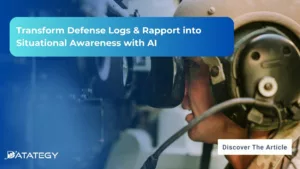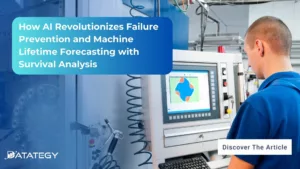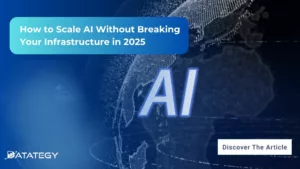Transform Defense Logs & Rapport into Situational Awareness with AI...
Read MoreOil & Gas: the Future with Generative AI
Table of Contents
ToggleThe oil and gas industry is very innovative because it plays a vital role in the economy. The oil and gas industry is innovative because it is crucial for the economy. All companies in the industry use the latest technology to improve their processes, increase productivity, and protect their market.
One of these new technologies is generative AI. An Accenture study revealed that 62% of oil and gas companies are using or planning to use generative AI.
Find out how papAI can improve the deployment of AI projects in the Oil and Gas Industry.
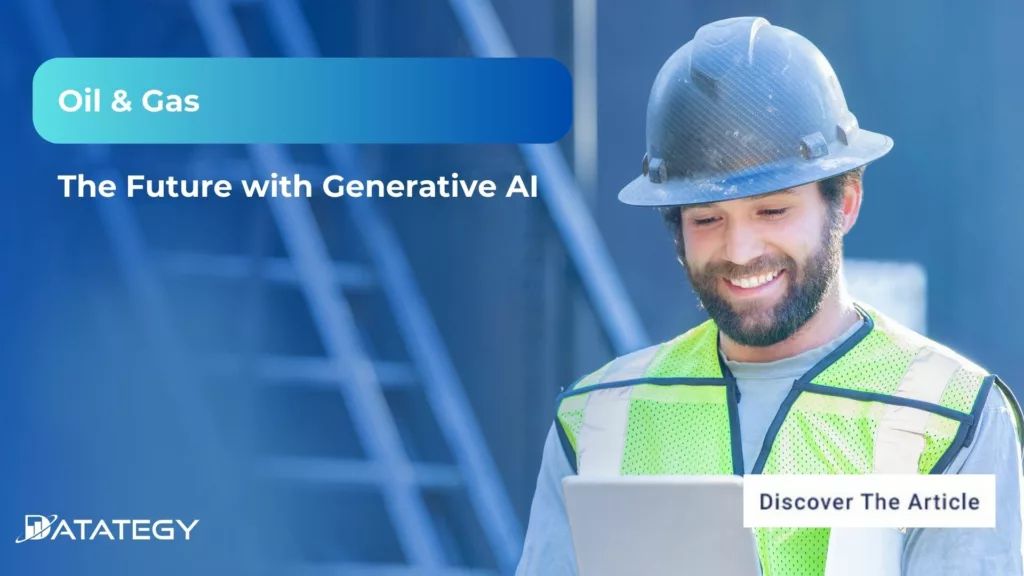
In this article, we’ll look at the benefits and challenges of using generative AI in the oil and gas industry and how companies can accelerate its adoption.
What does Generative AI Mean?
Generative AI is a sub-category of artificial intelligence (AI) that aims to help the user create an image, video, or song using different instructions called “prompts”. These creations are made possible by the large amount of data analyzed on all web platforms (google, Facebook, X, etc….)
In the oil and gas industry, Generative AI is a groundbreaking tool that can transform how oil and gas experts tackle tasks, interpret data, and convey intricate concepts.
Understanding the Process of Generative AI
Generative AI creates images, videos, or songs by following user prompts. The process involves several steps.:
- User Input: Provide specific instructions or prompts to guide the AI in creating the desired output.
- Data Analysis: Generative AI analyzes vast amounts of data from various sources, including web platforms.
- Algorithmic Processing: Advanced algorithms process the input and data, identifying patterns and generating new content.
- Creation of Output: The AI generates images, videos, or songs based on the learned patterns and user prompts.
- Feedback Loop: Users can provide feedback on the generated output, refining the AI's capabilities over time.
This iterative process allows Generative AI to continuously improve its ability to create diverse and meaningful content.
Within an Organization, Which Positions Use Generative AI?
Generative AI is used in different roles in different departments of an oil and gas corporation to improve operations, decision-making, and innovation. Important roles consist of:
- Data Scientists: By using Generative AI, data scientists may analyze large datasets, find complex patterns, and create prediction models. The efficiency of oil and gas operations is increased by these insights, which enable strategic decision-making.
- Engineers that work with reservoirs: Reservoir engineers use Generative AI for advanced modeling and simulation. This new approach improves reservoir management and optimizes oil and gas production for better resource utilization.
- Geoscientists: By using Generative AI to precisely interpret seismic data, geoscientists are revolutionizing the process of identifying probable oil and gas deposits. Through the provision of insightful information on subsurface structures, this technology improves exploration efforts.
- Maintenance Engineers: By using generative artificial intelligence (AI) to forecast maintenance needs, maintenance engineers may identify equipment problems early and guarantee optimal asset reliability. By reducing downtime, this proactive strategy helps to simplify oil and gas operations.
- Visualization Experts: These professionals use Generative AI to provide powerful visual representations of intricate data. This improves communication inside the company and facilitates clearer decision-making by making complex information easier to grasp.
- Operations Analysts: By using Generative AI to optimize operational efficiencies, operations analysts expedite data analysis procedures. This guarantees resource optimization and efficient management by assisting in the making of well-informed decisions throughout routine operations.
Benefits of Generative AI in Oil and Gas
Enhance Visualization Techniques:
Utilizing algorithms that convert intricate information into visually striking representations is a key component of utilizing Generative AI for advanced data visualization. This covers methods like dimensionality reduction algorithms for efficient visualization and generative adversarial networks (GANs) for the creation of images.
Generative AI facilitates improved internal communication and decision-making within the company by producing clear and understandable visualizations.
These visualizations help with the interpretation and analysis of difficult data related to oil and gas by offering a thorough grasp of complex data sets.
Accurate Safety Simulations:
Generative AI-driven simulations in the field of safety training use intricate physics-based algorithms to produce realistic situations for emergency response drills. Through the use of virtual reality (VR) and augmented reality (AR) technology, these simulations provide professionals in oil and gas environments with immersive training experiences.
People can practice effective response techniques since the algorithms make sure that scenarios appropriately depict potential emergency circumstances. This contributes to a proactive safety culture in oil and gas operations by improving emergency response capabilities, readiness, and general safety awareness.
Support for Strategic Decision-Making:
Generative AI is a powerful tool for executives to make strategic decisions in the oil and gas industry. It uses machine learning and advanced analytics to evaluate the impact on corporate strategy, growth, and competitiveness. Decision-makers can analyze large datasets using methods like reinforcement learning to gain valuable insights.
In the quickly changing oil and gas sector, Generative AI guarantees that executives have the knowledge they need to handle obstacles, seize opportunities, and keep a competitive advantage by offering a data-driven basis for strategic decision-making.
A to Z of Generative AI: An in-Depth Glossary
A form of artificial intelligence called “Generative AI” enables machines to produce text, pictures, and music on their own. By automating activities, improving customization, and encouraging innovation, it is revolutionizing industries by using the power of algorithms and deep learning. This guide will provide you with a solid foundation in Gen AI terminology to help you better understand this exciting field.
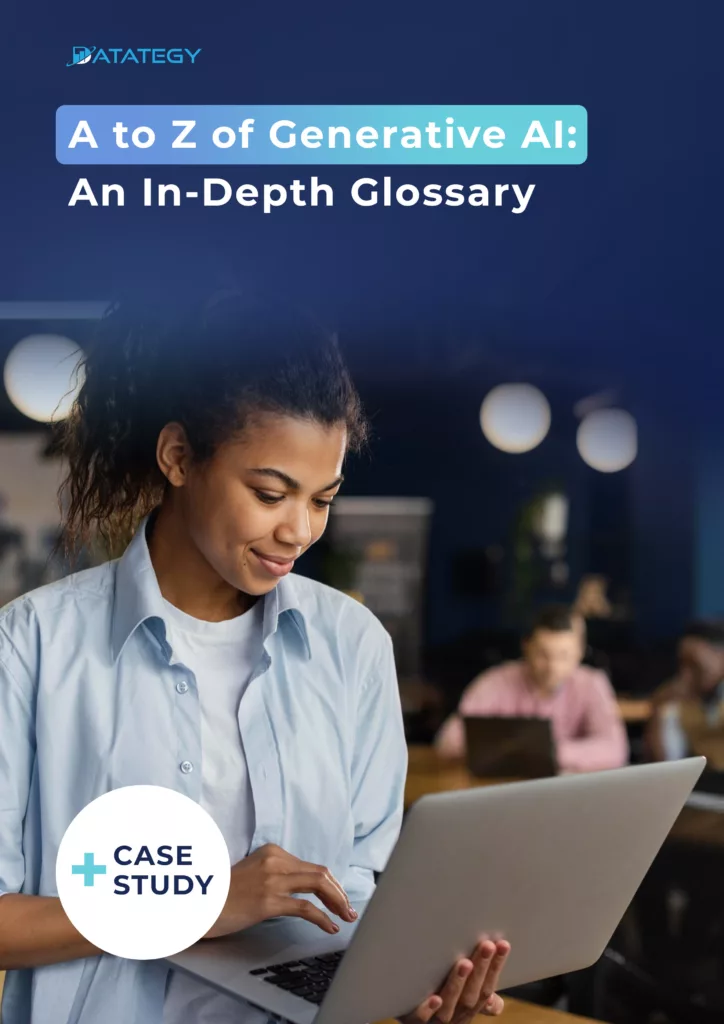
Real-world Use Cases
Generative AI-Powered Document Generation:
Generative AI is used in document production, offering a useful tool for writing textual material, reports, and documentation. Users may direct the AI to produce written content on environmental impact assessments, exploration results, and oil and gas processes by using prompts. This practical application demonstrates how well generative AI can automate operations related to document generation.
Using Generative AI to Create Images and Videos:
Using generative AI’s ability to create pictures and videos is essential to its effective integration in the oil and gas industry. Generative AI may produce visually striking information, such as lifelike representations of reservoir architecture or simulations of oil and gas activities, by giving precise instructions or prompts. This programme simplifies the visualisation process and provides industry experts with a cutting-edge tool for illustrating intricate situations.
Using Generative AI to Solve Creative Problems:
In the oil and gas industry, generative AI stimulates innovative problem-solving by producing new concepts in response to cues. It investigates novel approaches to problems using sophisticated algorithms, promoting ongoing innovation and progress. By pushing experts to think outside of conventional paradigms for problem-solving, this application promotes efficiency improvements and technical developments.
What are the Steps in Integrating Generative AI Approaches :
- Specify your goals:
Establish precise goals and objectives for integrating data-driven strategies and generative AI into your workflow. Determine specific tasks or difficulties in your field, including data analysis, predictive modeling, or picture creation.
- Internal Training Programmes and Workshops:
Organise training sessions and seminars to acquaint staff members with the potential of Generative AI.
Organise interactive workshops so users may investigate the technology and comprehend how it might be used in their particular positions.
- Select Generative AI Models Relevant to Oil and Gas:
Select Generative AI models that perform well in tasks unique to the oil and gas industry,
- Feedback Loop and Iterative Development:
Create a feedback loop to ensure ongoing development.
To improve data-driven procedures and the Generative AI model, collect user input and performance metrics.
To adjust to changing needs, use cycles of retraining and frequent upgrades.
- Validation and Testing:
To confirm the functionality and dependability of the combined data-driven and generative AI system, thoroughly test it.
Analyze the model’s scalability, resilience, and accuracy under various circumstances.
- Collaborative Projects:
Promote collaboration between disciplines in initiatives utilising generative artificial intelligence.
Encourage collaborative projects that let staff members from many departments work together and share knowledge.
Challenges and Considerations
Data security and privacy issues are interrelated, particularly as generative AI procedures frequently entail the analysis of enormous datasets that contain confidential and private data. It’s difficult to strike a balance between protecting people’s privacy and using data to improve decision-making.
It necessitates open communication regarding data usage with stakeholders, following privacy laws, and using anonymization methods. To avoid unforeseen effects like biased model outputs or the unintentional publication of sensitive information, the responsible and ethical deployment of generative AI must be guided by strict ethical frameworks and governance standards.
How does papAI 7's go beyond just generative AI?
Real-world applications of context-aware generative AI
Context-aware generative AI refers to an AI system that can create content while understanding and adjusting to its environment. It helps bridge the gap between processing unorganized data and human-level understanding. Context-aware generative AI is an AI system that can create content while understanding and adjusting to its environment. It helps bridge the gap between processing unorganized data and human-level understanding. This AI system considers basic context-related questions like who, what, where, when, and why. It can generate text, visuals, or replies based on this information.
For example, in the most recent update of papAI, the user has the option to determine the length of the text for the auto-generated product description. This feature allows the user to craft a description that fits within the constraints of in-house brochures and is suitable for their e-commerce site, social media platforms, and online marketplace.
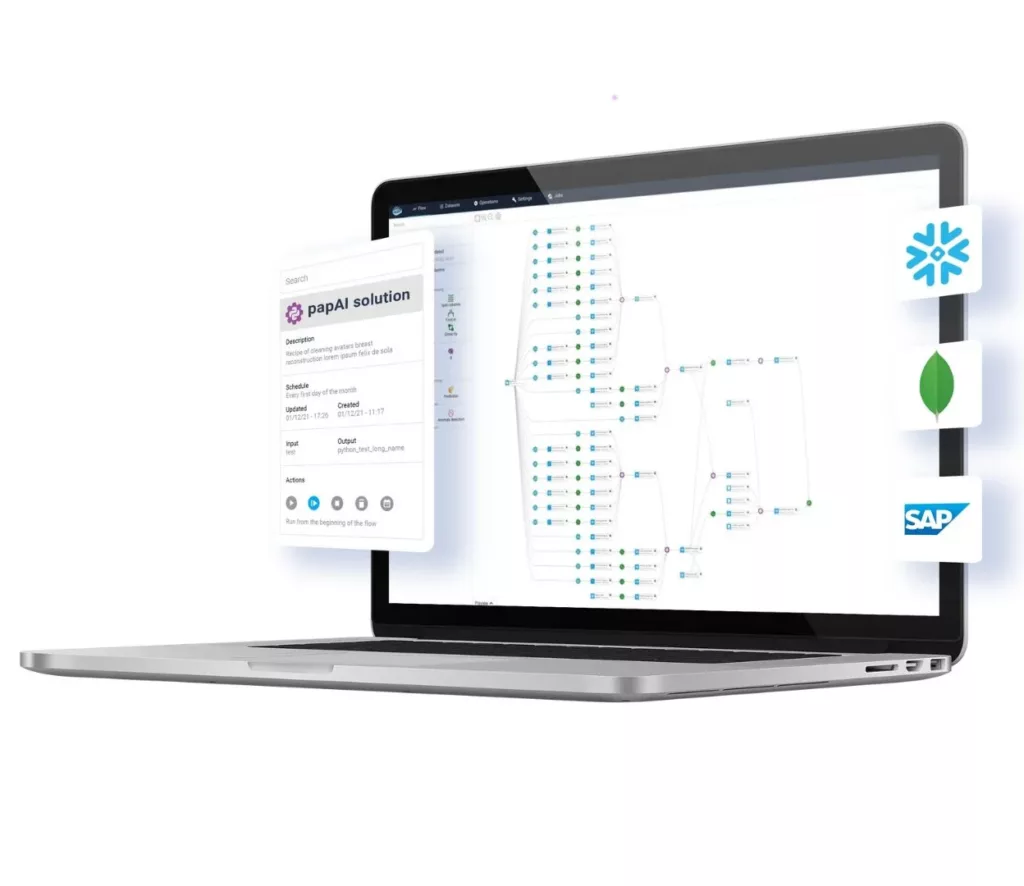
Generative AI vs. Context-Aware Generative AI
Discover the difference between generative AI and contextual generative AI below.
| Aspect | Generative AI | Context-Aware Generative AI |
|---|---|---|
| Flexibility | Operates within fixed models | Adaptable to user-defined criteria |
| Content Creation | Generates content based on patterns | Creates content tailored to specific needs |
| Parameters | Fixed set of rules and models | Parameters defined by users for content generation |
| Adaptability | Limited adaptability | High degree of adaptability and customization |
| Content Variety | Limited range of generated content | Wide array of content types and styles |
| Automation | Partial automation | More automated content generation process |

At Datategy, we believe that Generative AI is not just a technological advancement; it is a catalyst for innovation and sustainable practices in the oil and gas industry. It aligns perfectly with our commitment to pushing the boundaries of what’s possible and driving positive change in the energy sector.
Ahmed Drif
Head of Energy at Datategy
Use papAI's AI-based generative tool to address your unique needs
With our platform, you may create an AI-driven toolkit specifically tailored to your requirements. You may improve the efficacy and precision of your content creation endeavors by employing state-of-the-art machine-generated learning methodologies.
Book your demo right now to find out more about how the papAI solution can transform your AI environment. With the help of our team of experts, you can create a unique AI-based solution that meets your business’s needs.
Generative AI is a sub-category of artificial intelligence (AI) that aims to help the user create an image, video, or song using different instructions called “prompts”. These creations are made possible by the large amount of data analyzed on all web platforms (google, Facebook, X ect…).
Generative AI is used in different roles from Data Scientists, Geoscientists, Maintenance Engineers, and Operations Analysts.
Generative AI in Oil and Gas can enhance visualization techniques, accurate safety simulations, and support for strategic decision-making.
Generative AI can help oil and gas companies generate AI-powered documents, create images and videos, and solve creative problems.
Interested in discovering papAI?
Our AI expert team is at your disposal for any questions
Why AIOps Is Key to Cyber Threat Detection in Defense?
Why AIOps Is Key to Cyber Threat Detection in Defense?...
Read MoreHow AI Transforms Predictive Maintenance in Defense Equipment
How AI Transforms Predictive Maintenance in Defense Equipment In a...
Read MoreHow to Scale AI Without Breaking Your Infrastructure in 2025
How to Scale AI Without Breaking Your Infrastructure in 2025...
Read More